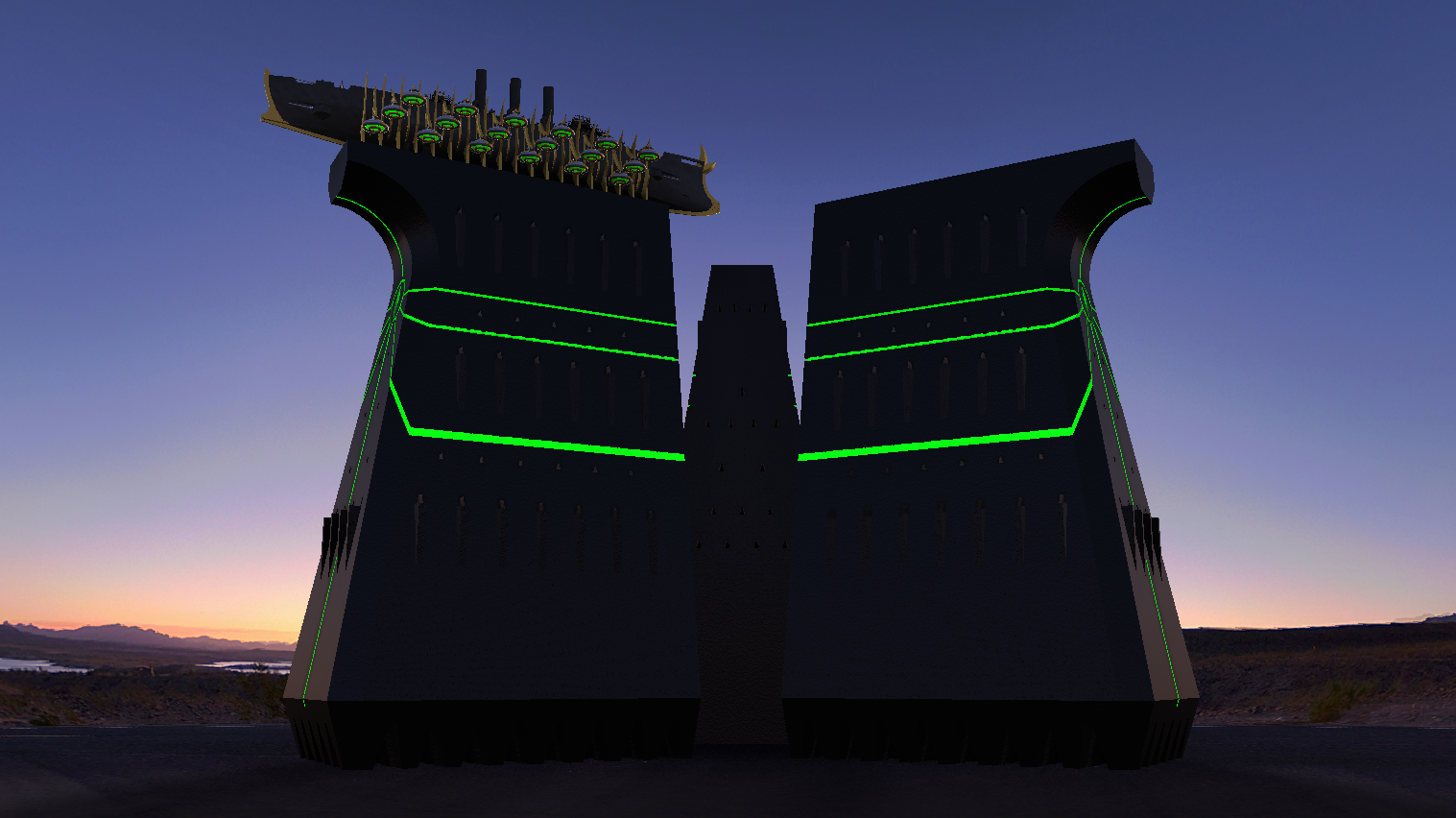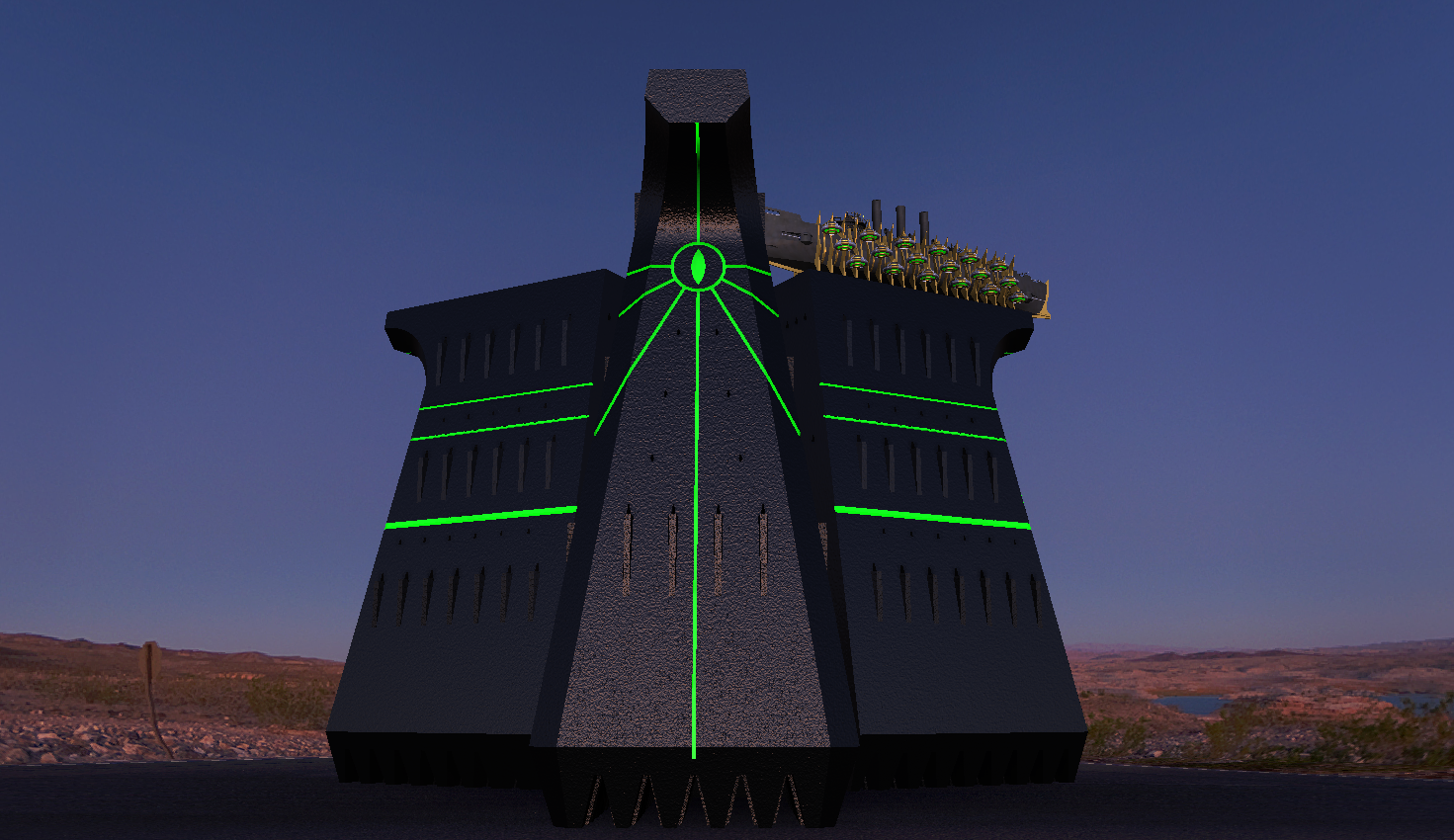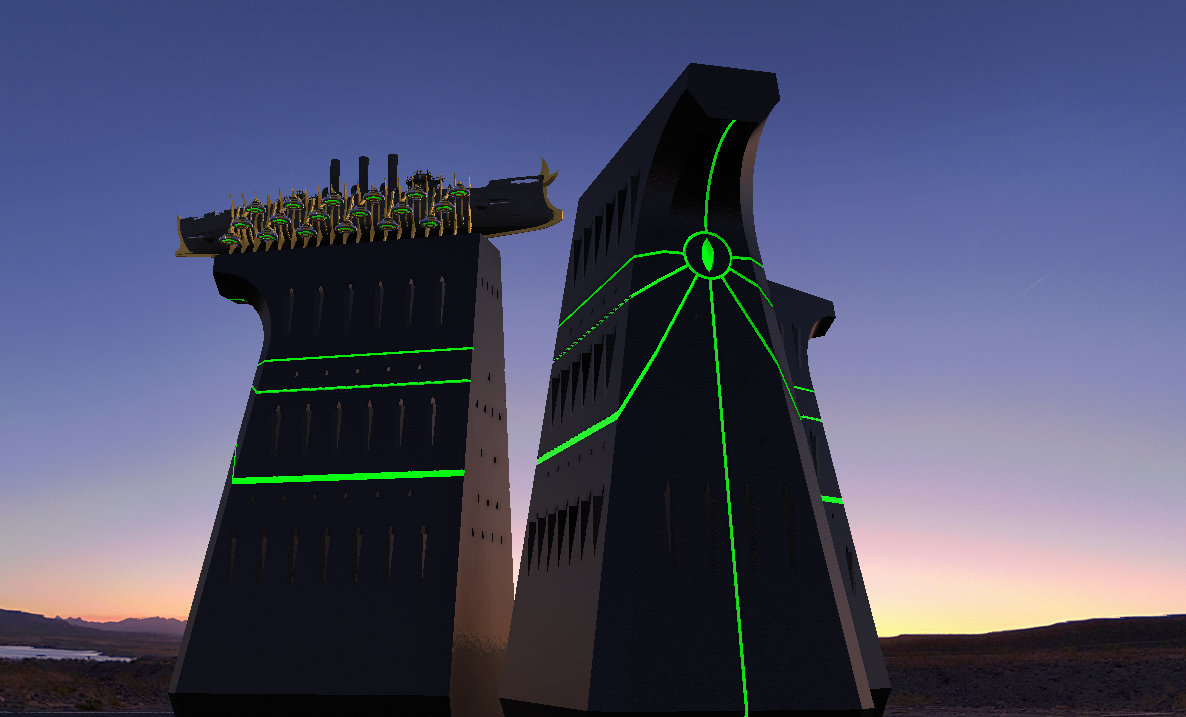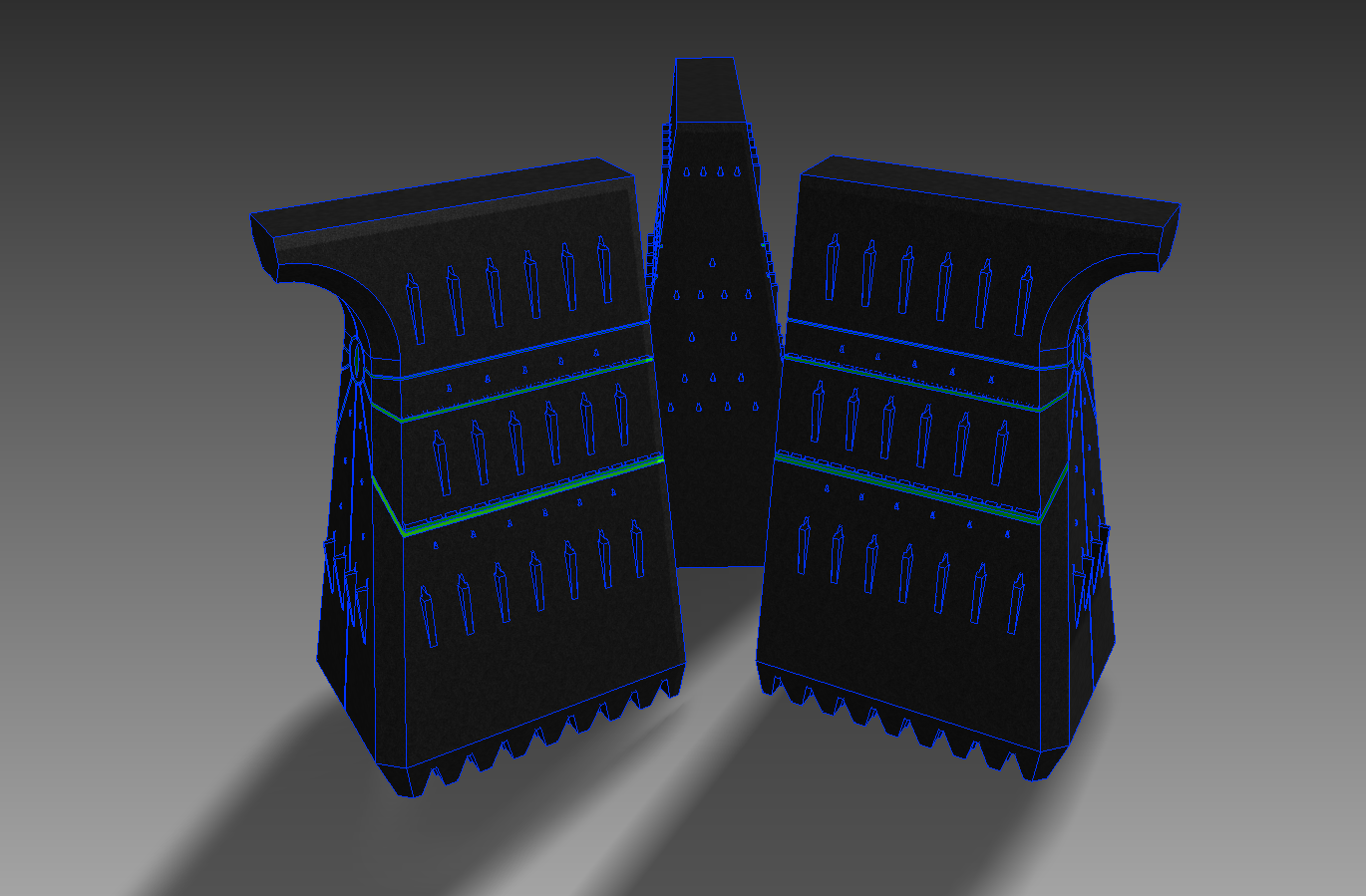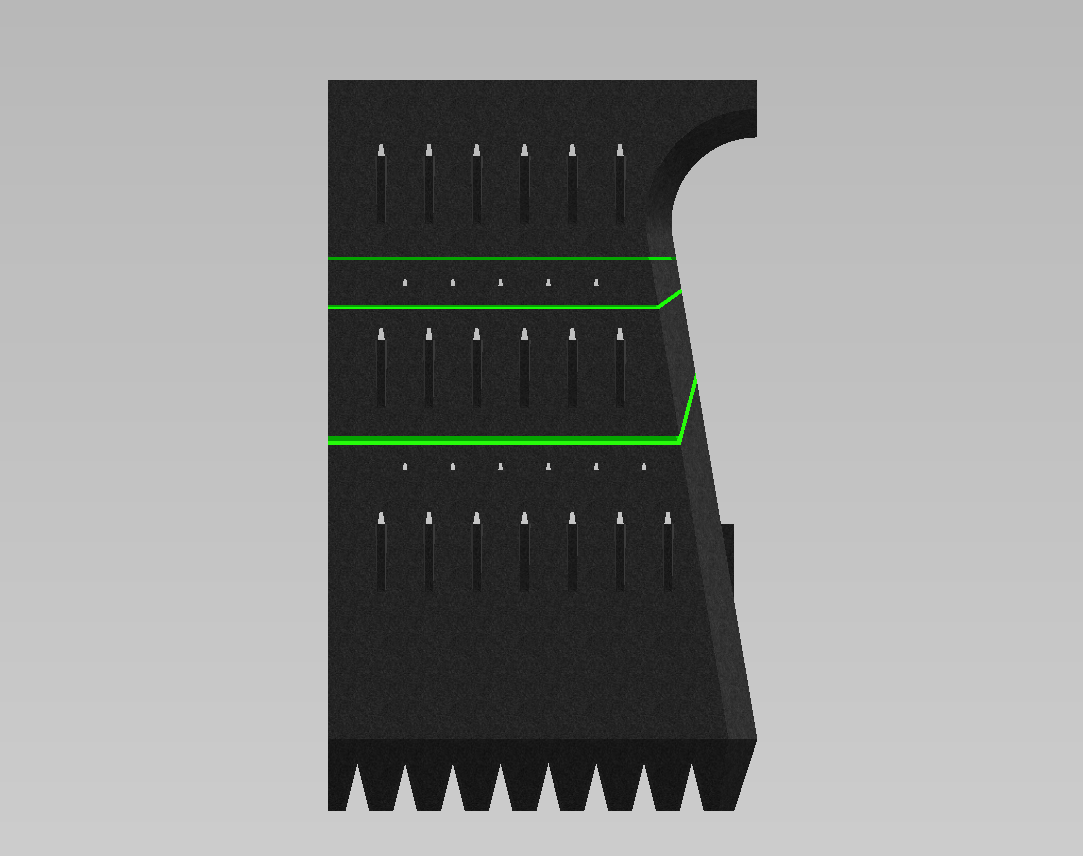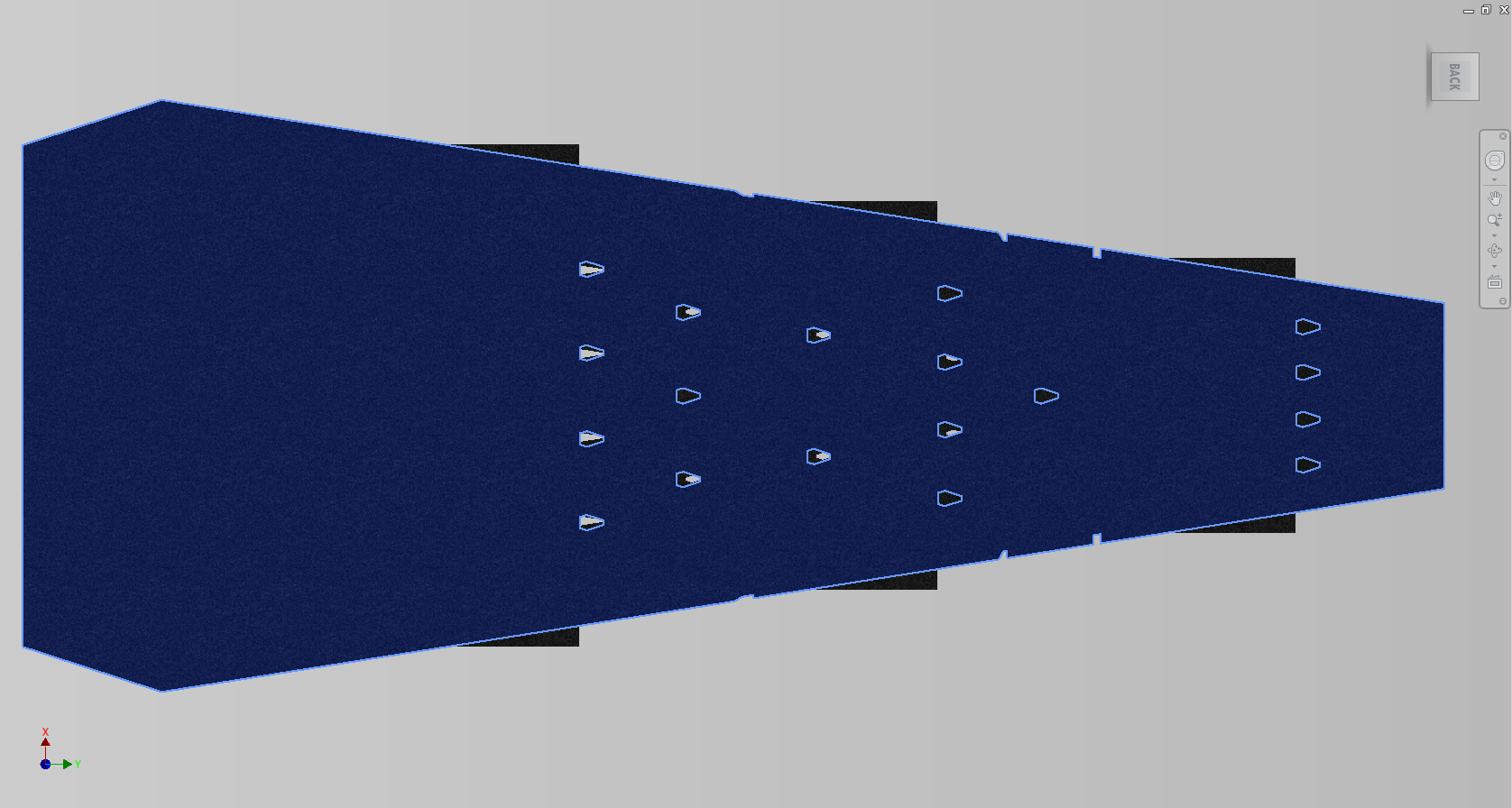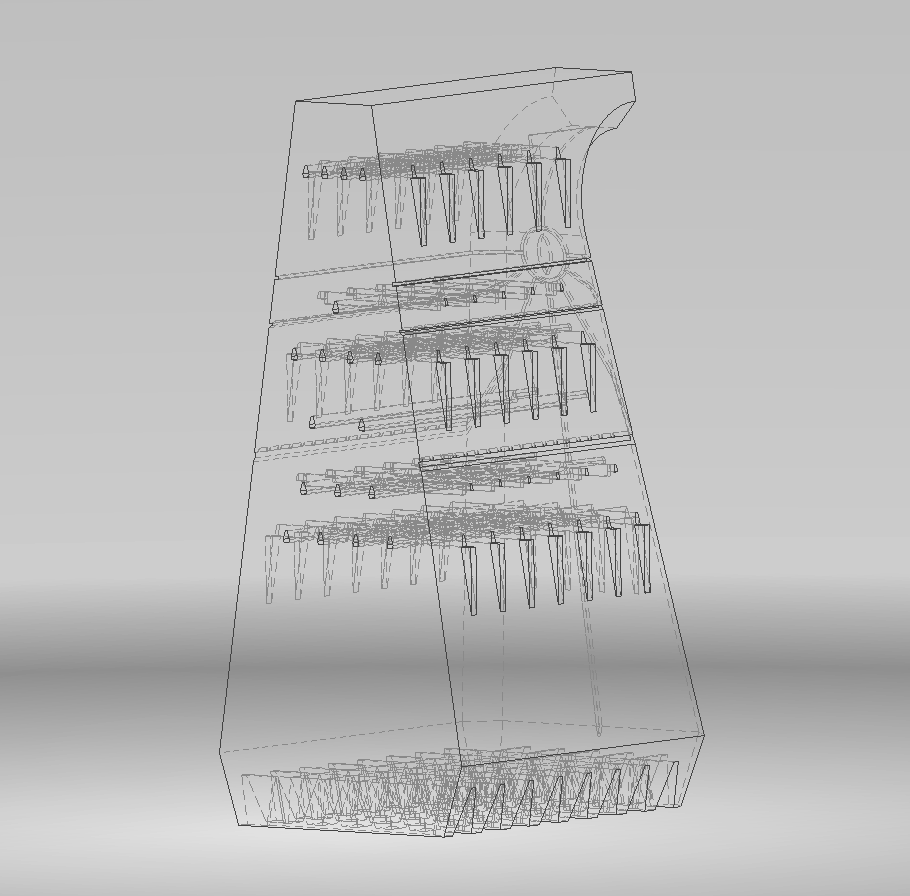The Perch is an ancient site with a tangential connection to The Nine Empires. Located deep in the mountains of Khandar, this ancient fortress was built some 20 millennia before the events of the story.
The Perch is constructed of black moonstone, which isn't moonstone at all, but a type of basalt that is known to contain neticine crystals. Pure crystals were cut into tiles and set into metre-wide grooves all over the structure, creating a massive image of a symbol called the Eye of Darkness.
Standing at 153 metres tall, the Perch is roughly the size of the Great Pyramid. Though it wasn't designed for airship docking, it has such solid construction that it is able to comfortably support the weight of the armoured airship Zaphnora. When the Zaphnora approached the ancient fortress, the neticine designs glowed for the first time in millennia, the crystals naturally responding to the noise from the ship's levitators.
A highlighted view of the fortress itself shows all the windows leading to the outside. There are networks of passages throughout the three freestanding structures, though this model includes only those with external access.
Three of these megalithic structures make up the fortress. You can see here the rows of windows on the sides.
Some of the passages run all the way from the front to the rear of each structure, some don't. These are connected to the side passages in a grid pattern.
These last two views in wireframe (with hidden edges) mode show the networks of passages that I have included on this model. I may add some vertical shafts or stairwells at some point in the future, but unless I find a need to depict the interior of the fortress, there isn't much reason to do that.
What I definitely will do, however, is round off edges and remove small chunks at random to simulate 20 000 years of weathering, just as I did with my first xenolith.
